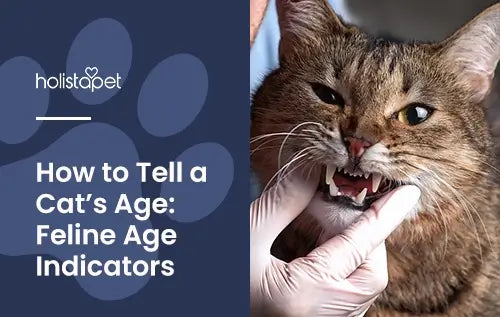Cats fighting is something no pet owner wants to deal with, but it happens more often than we would like. When two cats suddenly square off, you can end up scratching your head in confusion and frustration.
Understanding the causes behind feline fights can help you prevent them once and for all—or at least intervene safely when they do happen. Keep reading to learn how to keep your furry companions from becoming foes.
Why Do Cats Fight? Understanding the Triggers

Many factors can trigger fights between cats. Recognizing these triggers early on can save you from dealing with a lot of stress in your home.
One of the most common reasons is territorial behavior. Felines are naturally territorial animals. When they feel that other cats are invading their space, they can get pretty aggressive.
Cats also fight due to stress or fear. When in a new or unfamiliar environment, for example, they may become defensive and territorial, leading to aggression and fighting.
Another reason for cats' fighting behaviors is competition, whether over food, toys, or attention. Properly managing your pets' resources can do wonders in reducing conflicts.
Territorial Disputes and Hierarchy Struggles
Cats see their home as their domain. When strange cats enter that safe space, it can lead to a showdown. They'll hiss, growl, and sometimes physically fight to assert dominance. This behavior is often rooted in the need to protect their area and resources.
In multi-cat households, hierarchy struggles can fuel aggression. Felines tend to establish a pecking order, trying to figure out who's the boss. If an unfamiliar cat disrupts this balance, it may lead to tension and clashes. Keeping their space and resources separate can help ease these power struggles.
Fear, Stress, and Sudden Environmental Changes
When a cat feels threatened by a sudden change in their environment, they may lash out. A new pet, a change in routine, or unfamiliar smells can trigger these reactions. Cats often respond to these stressors with aggression, especially if they feel cornered or trapped.
Stress can also stem from many things like hearing loud noises and encountering unfamiliar cats. This heightened sense of anxiety makes it harder for your kitty to remain calm. Keeping a stable and quiet environment can help reduce these stress-related conflicts in your home.
Competition Over Food, Toys, or Attention
All our feline friends, from male to female cats, are naturally possessive of their resources. If they feel like they're competing for something they value, aggression is possible. Disputes over a food bowl or a favorite toy can escalate quickly, especially if one cat feels deprived.
Attention from humans can also trigger tussles. Cats often compete for affection, and if one feels neglected, they might act out. Making sure each pet has their own space and resources can help minimize these competitive behaviors.
How To Prevent Cat Fights Before They Start
Preventing fights before they start can keep the peace in your home. With a few simple strategies, you can reduce the chances of aggression between your feline companions. Here's an overview of some solutions that we'll discuss more in the next sections:
- Proper Socialization. Introduce new cats slowly to help them get used to each other without stress.
- Managing Shared Resources. Give each cat their own food and water bowl to reduce competition.
- Recognizing Early Signs of Tension. Watch for warning signs like staring or growling so you can step in before a brawl breaks out.
Proper Socialization and Gradual Introductions
If you have more than one cat, bringing a new one in without the right process can lead to fights. Gradually introduce the new cat to your existing pets by keeping them in separate spaces at first. This will allow them to adjust to each other's scent and presence. Slowly increase their interaction time, giving them a chance to bond and get comfortable.
A positive, calm approach during introductions can make all the difference. Rewarding good behavior, like calm interactions, with treats can help reinforce positive associations with the new cat. This can prevent any territorial fighting from happening in the future.
Related Post: Introducing a Kitten to an Older Cat Safely
Managing Shared Resources Like Food, Water, and Litter Boxes
Competition for essential items like food, water, and litter boxes can trigger aggression. To avoid this, make sure each cat has their own separate food and water bowls placed in different areas of your home. This gives them the space to eat without feeling threatened by other cats.
The same goes for litter boxes. Each cat should have their own box, plus one extra. This will reduce the chances of territorial disputes over bathroom time. By giving your furry companions their own resources, you help keep their territory intact and reduce fights.
Recognizing Early Signs of Tension Between Cats
Cats often give subtle clues when they're feeling uneasy or territorial. Recognizing these signs early gives you a chance to intervene before things escalate:
- Staring or Glaring. A fixed, unblinking stare is a clear sign of tension.
- Ears Flattened or Flicking. Ears flattened against the head or flicking back can indicate discomfort.
- Puffed Up or Swishing Tail. A puffed-up or rapid swishing tail signals agitation or a defensive mood.
- Hissing or Growling. Felines often use these vocal cues to warn other cats to back off.
How To Stop Cats Fighting Safely

During fights, it's important to intervene safely to prevent injury to both pets and yourself. Reacting calmly and quickly can stop the tussle without escalating the situation.
Never try to physically separate the cats with your hands, as this can lead to scratches or bites. Instead, use methods that protect both you and your kitties. In the following sections, we'll explore how to break up feline fights without harm and the key things you should avoid doing.
Safe Methods To Separate Fighting Cats Without Injury
It's crucial to separate fighting cats safely without causing harm to either pet. Try these methods for safe intervention:
- Use a Baby Gate. This allows you to create a physical barrier between the cats without putting yourself in harm's way.
- Loud Noise. A loud, sudden noise like clapping your hands or banging a pot can startle felines and break up the fight.
- Closed Door. Keep your cats indoors with a door closed between them to give them space to cool off.
What Not To Do When Cats Are Fighting
Knowing what not to do during cat scuffles is just as important. Certain actions can escalate the aggression. Here's what you should avoid:
- Don't Get Involved Physically. Never try to physically separate the cats with your hands. This could lead to scratches or bites.
- Avoid Yelling. Shouting will only add to the stress and may fuel the aggression.
- Don't Punish the Cats. Instead, focus on removing them from the situation and creating a calm environment.
- Spray Them with Water. Using water as a deterrent can startle the cats, but it might not address the underlying cause of the aggression. It's better to focus on separating them calmly without creating additional stress.
How To Ease Aggression or Fear in Cats
It's important to address your cats' aggression early to prevent fights from becoming habitual. Here's what you can do:
- Provide a Safe Space. Give each kitty their own space where they can retreat and feel secure.
- Use Positive Reinforcement. Reward calm and non-aggressive behaviors to encourage them to act peacefully.
- Create a Quiet Environment. Reduce loud sounds and chaotic surroundings to help your companion animal feel more at ease.
Identifying Fear-Based vs. Territorial Aggression
Fear-based aggression often occurs when a cat feels cornered or threatened by something unfamiliar. Meanwhile, territorial aggression happens when a feline feels the need to protect their space from other animals or people.
Defensive postures like hissing or swatting usually characterize fear-based aggression. Territorial aggression often involves a feline trying to assert dominance over their environment. They may display behaviors like growling or chasing other cats away.
Side note: Young cats, especially kittens, often engage in play aggression or play fighting. This can sometimes look like a real fight but isn't meant to harm.
Natural Calming Remedies Like CBD for Cats

Natural calming remedies like CBD (cannabidiol) can be incredibly helpful in keeping our kitty companions zen. CBD has been gaining popularity as a soothing aid without the need for harsh chemicals. It's a non-intoxicating option that helps our feline companions feel more at ease in their environment.
HolistaPet offers quality cat CBD products, including CBD Calming Soft Chews, CBD Cat Treats, CBD Oils, and CBD Capsules. These options work to calm nerves, reduce stress, and promote a sense of well-being in your feline friend.
Reintroducing Cats After a Fight
Always allow fighting cats to cool off before bringing them back together. Reintroducing them slowly and gradually helps them rebuild trust. The tension can ease with time, and they may learn to coexist peacefully again.
- How to Safely Reintroduce Fighting Cats to Each Other. Start by keeping the cats in separate rooms for a few days, letting them adjust to each other's scent through a closed door.
- Using Positive Reinforcement To Rebuild Trust. Reward calm behavior and peaceful interactions with treats to encourage positive associations with each other.
When To Seek Professional Help for Aggressive Cats
Seek professional help if your cats' fighting behaviors persist despite your efforts. A behaviorist or veterinarian can provide valuable insights and solutions for more severe cases of aggression. Getting help early on can prevent further scuffles and improve your kitties' well-being.
Signs Your Cat May Need a Behaviorist or Trainer
Consult a behaviorist or trainer if your cat's aggression becomes frequent or intense. Here are some signs to watch:
- Frequent Fighting. If your cats are constantly fighting, even after you've tried interventions, it might be a sign they need expert help.
- Extreme Aggression. Unprovoked or overly violent behavior, such as constant hissing or swatting, suggests that professional assistance is necessary.
- Behavioral Changes. If your kitty suddenly becomes more aggressive or fearful without an obvious cause, a behaviorist can help identify any underlying triggers.
How Veterinary Checkups Can Rule out Medical Causes of Aggression
Sometimes, feline aggression can stem from underlying medical issues. It's important to rule out health problems that could be causing pain or discomfort, leading to aggressive behavior. For example, conditions like dental disease or arthritis can make your cat irritable and more hostile.
A quick veterinary checkup can help identify any health issues. Getting a professional diagnosis guarantees that you're addressing the root cause of the problem, making it easier to manage your cat's behavior in the long term.
Final Thoughts on Cats Fighting
Dealing with feline fights can feel overwhelming, but it's possible to restore peace in your home with the right steps. Understanding why felines fight, preventing conflicts before they happen, and handling them safely when they do arise can all help reduce tension. Keeping calm and being proactive is the key to making sure your kitties live harmoniously.
For natural, soothing options, check out HolistaPet's CBD products for cats. These calming solutions can help your furry friends feel more relaxed and create a tranquil environment for everyone in the house. For more cat care tips click here.







![Probiotics For Dogs [Soft Chews] - HolistaPet](http://www.holistapet.com/cdn/shop/files/Probiotic-Infographic-1_472d7a29-e30c-435a-9638-1365d8c3a9f9.jpg?v=1725384841&width=104)

















![How Old Does a Cat Have To Be To Get Fixed? [Age & Health Concerns]](http://www.holistapet.com/cdn/shop/articles/How_old_does_a_cat_have_to_be_3eaa70b1-be2f-4fd3-972c-feaf47760e5a.webp?v=1740185563&width=500)








Leave a comment
All comments are moderated before being published.
This site is protected by hCaptcha and the hCaptcha Privacy Policy and Terms of Service apply.